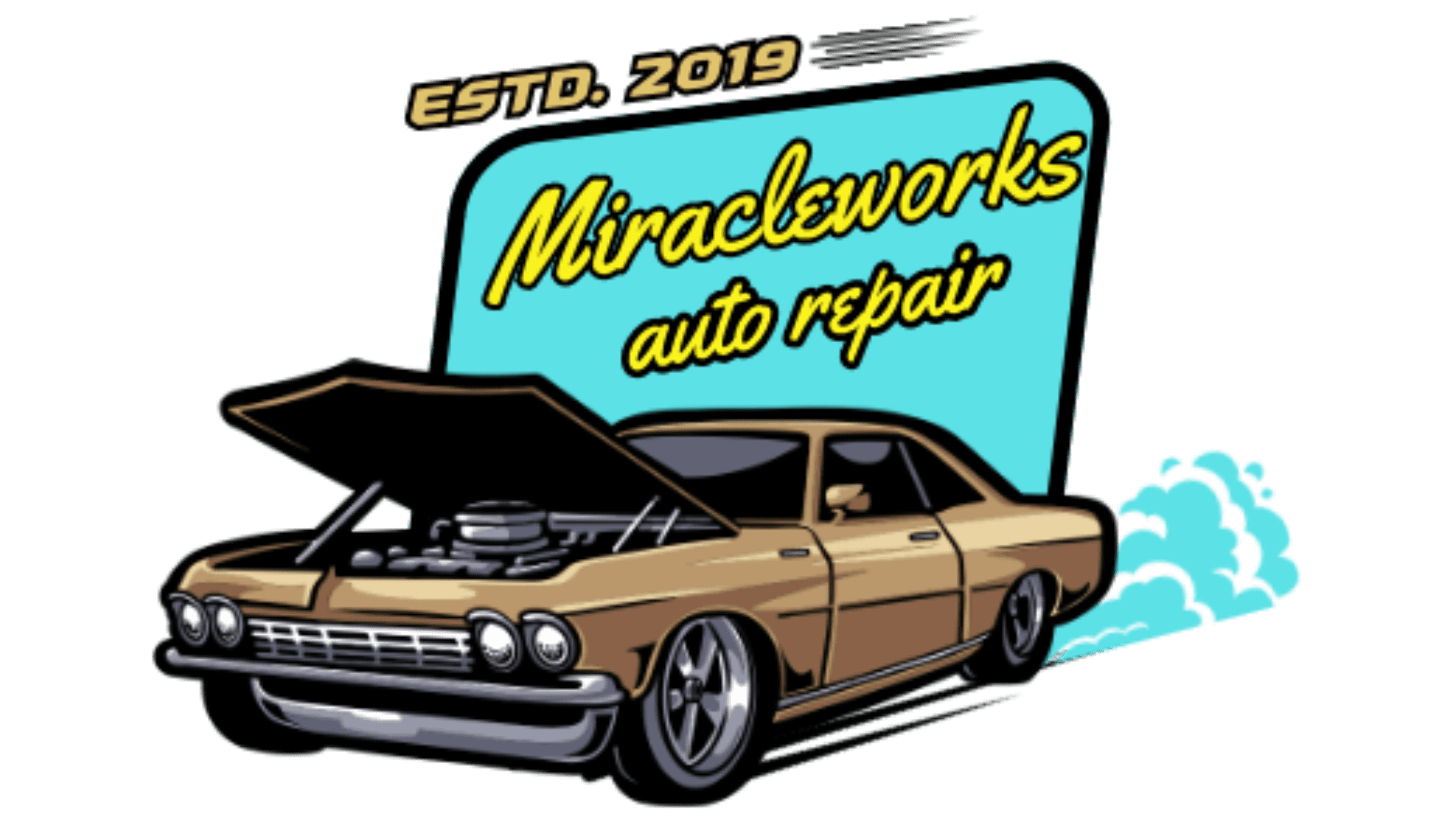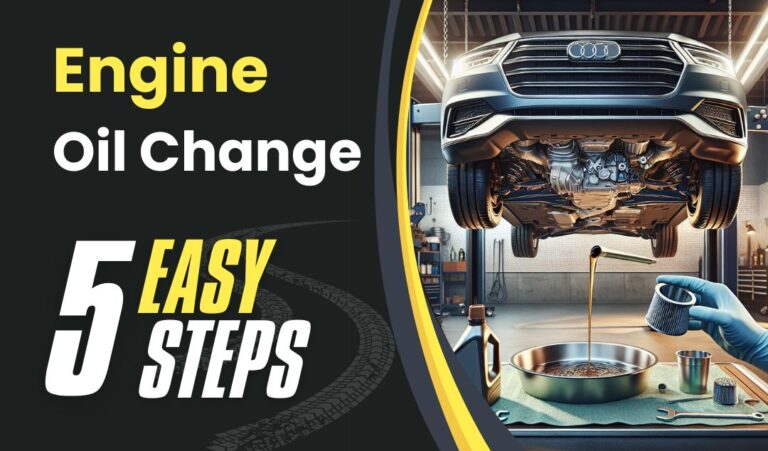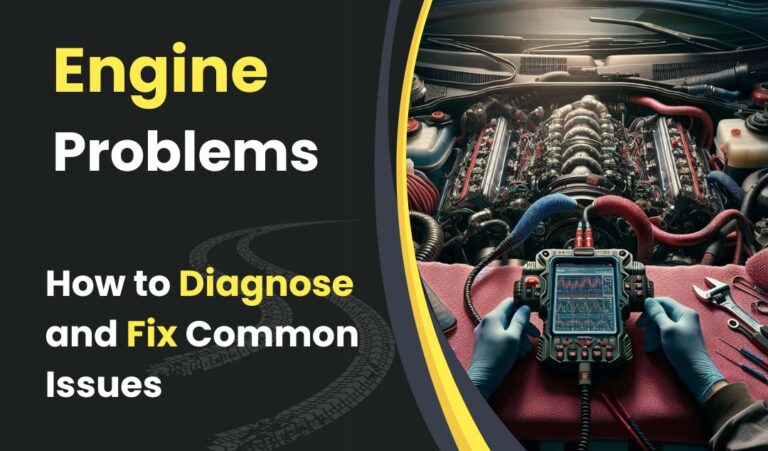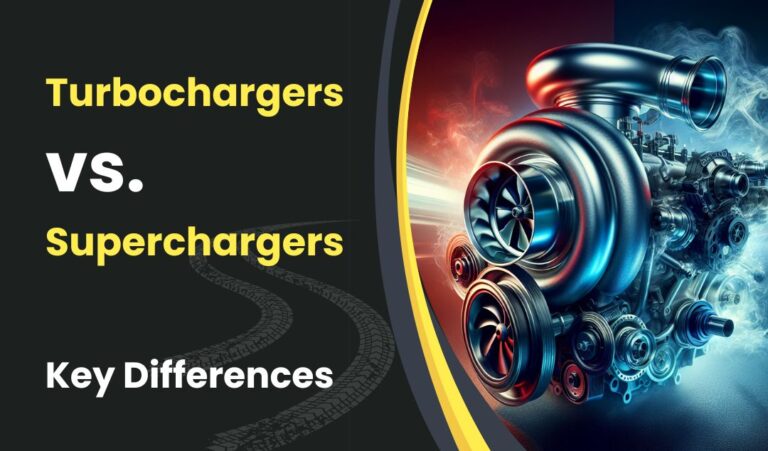15 Engine Alerts You Can’t Afford to Dismiss
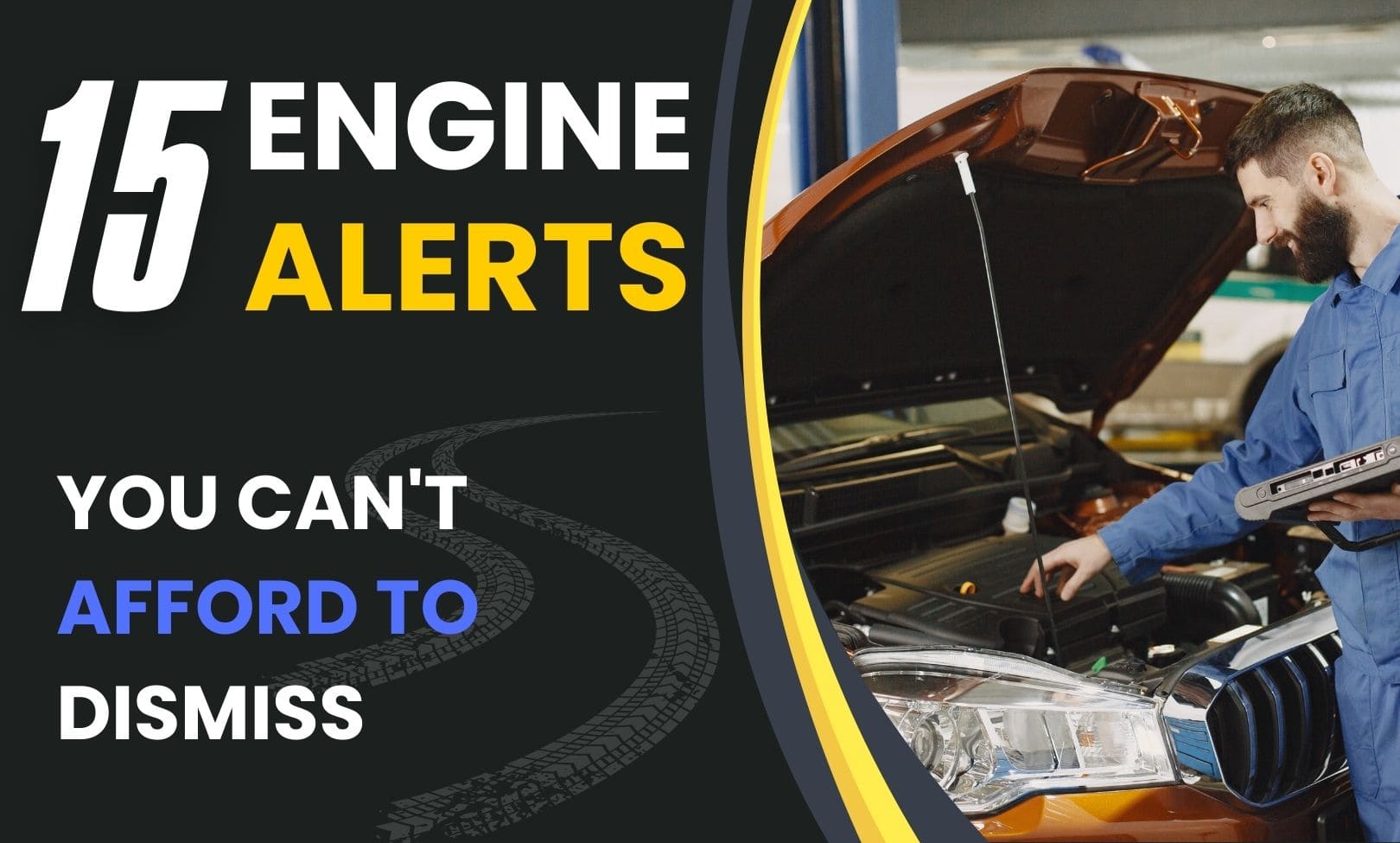
Is your car trying to tell you something? That faint rattle, the slight hesitation when you accelerate, or the unexplained drop in fuel efficiency – these aren’t just quirks, they’re your engine’s desperate cries for help. Ignoring these signs isn’t just risky; it’s like turning a blind eye to a ticking time bomb under your hood. In this critical guide, we’ll unveil 15 engine alerts that demand your immediate attention.
From the subtle whispers to the blaring alarms, we’ll decode the secret language of your vehicle. Don’t wait for a catastrophic breakdown or a wallet-draining repair bill. Your car’s longevity, your safety, and your bank account hang in the balance. Buckle up as we dive into the engine alerts you absolutely can’t afford to dismiss. Your future self (and your car) will thank you.
1. Unusual Engine Noises
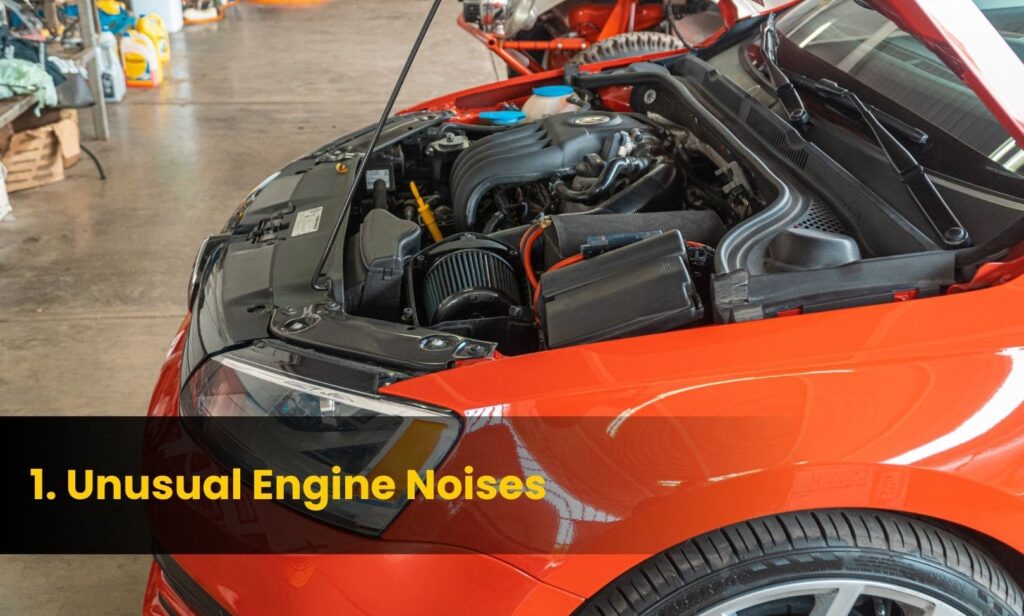
Engine Noise Types
Unusual engine noises can manifest in various forms. These include clicking during acceleration, continuous muffled sounds, dull metallic knocks, regular clicking at half-speed, high-pitched pinging, light knocking or pounding, and metallic double knocks at idle. Other noises may resemble hissing, chirping, whirring, whining, or grinding. Some sounds are described as rattling, sputtering, or rumbling.
Engine Noise Causes
Engine noises often indicate underlying issues. Common causes include worn piston rings, excessive piston-to-wall clearance, worn bearings, valve clearance problems, improper timing, misaligned rods, worn bushings, and loose piston pins. Other potential causes are clogged exhaust systems, damaged mufflers, engine misfires, carbon buildup, or problems with engine mounts. In some cases, these noises may stem from issues with accessories like the power steering pump or alternator.
Engine Noise Solutions
Addressing engine noises promptly is crucial to prevent further damage. Solutions vary depending on the specific issue but may include replacing worn parts, adjusting timing, fixing exhaust leaks, or addressing lubrication problems. Regular maintenance, including oil changes and tune-ups, can help prevent many of these issues. For accurate diagnosis and engine repair, it’s recommended to consult a professional mechanic, especially for complex issues like internal engine problems or transmission-related noises.
Contact Our Expert Team Today!
2. Dashboard Warning Lights
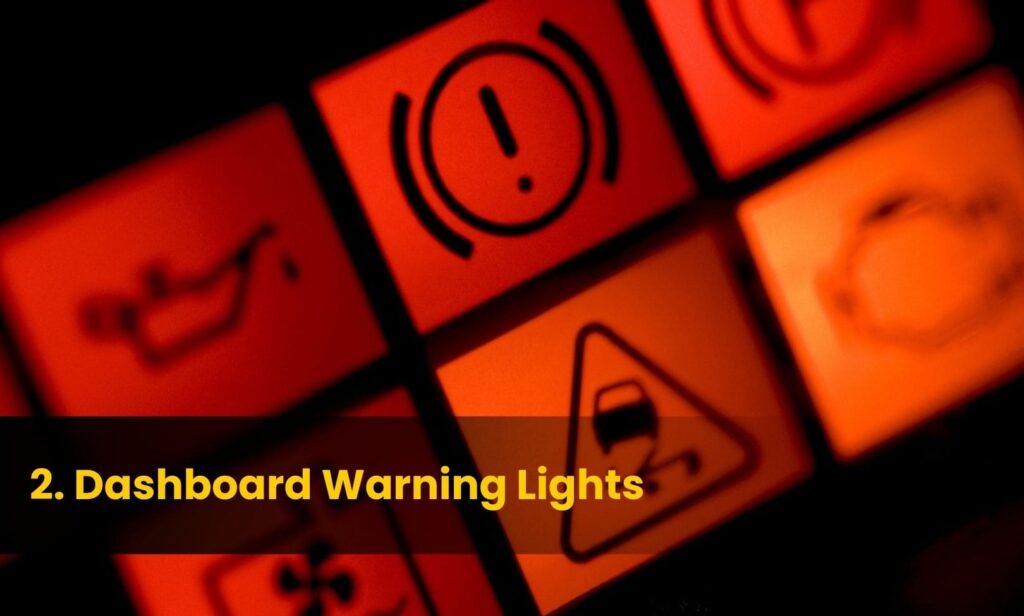
Common Warning Lights
Dashboard warning lights are crucial indicators of a vehicle’s health. These symbols vary in color, with green or blue lights signifying active systems, yellow or orange lights indicating issues requiring attention soon, and red lights demanding immediate action. Common warning lights include the check engine light, oil pressure warning, battery alert, and tire pressure monitoring system (TPMS) symbol.
Warning Light Meanings
The check engine light can indicate various issues, from a loose gas cap to serious engine problems. The oil pressure warning light, resembling an oil can, signals low oil or circulation issues. The TPMS symbol, an exclamation point inside a tire shape, indicates incorrect tire pressure. The battery alert light suggests charging system problems, while the engine temperature warning light signals overheating.
Addressing Warning Lights
When a warning light appears, it’s crucial not to ignore it. For red lights, pull over safely and turn off the engine. Consult your vehicle’s manual to understand the light’s meaning. If necessary, call for a tow truck and have a qualified mechanic diagnose the issue. Addressing warning lights promptly can prevent accidents, further vehicle damage, and costly repairs.
3. Decreased Engine Performance
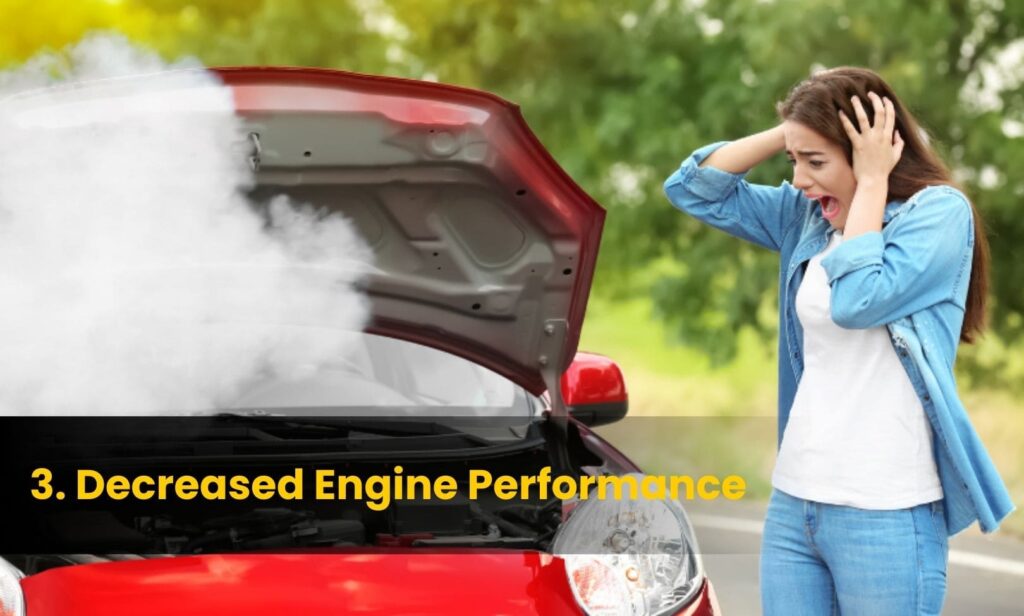
Performance Issues
Reduced engine power often manifests as sluggish acceleration, poor fuel economy, and difficulty maintaining highway speeds. Drivers may notice the check engine light illuminating, irregular idling, or sudden stalling. These symptoms can compromise safety, especially when merging or navigating traffic.
Performance Causes
Common causes include throttle body issues, malfunctioning sensors (such as mass airflow or accelerator pedal position), engine misfires, and exhaust system problems. Fuel system complications, transmission problems, and overheating can also lead to decreased performance. In some cases, the engine control unit may intentionally limit power to prevent further damage.
Performance Solutions
To address decreased engine performance, start by using an OBD2 code reader for accurate diagnosis. Solutions may involve replacing faulty components, cleaning clogged parts, or addressing brand-specific issues. Prompt attention to these problems is crucial to prevent further damage and ensure safe, efficient vehicle operation.
Contact Our Expert Team Today!
4. Excessive Exhaust Smoke
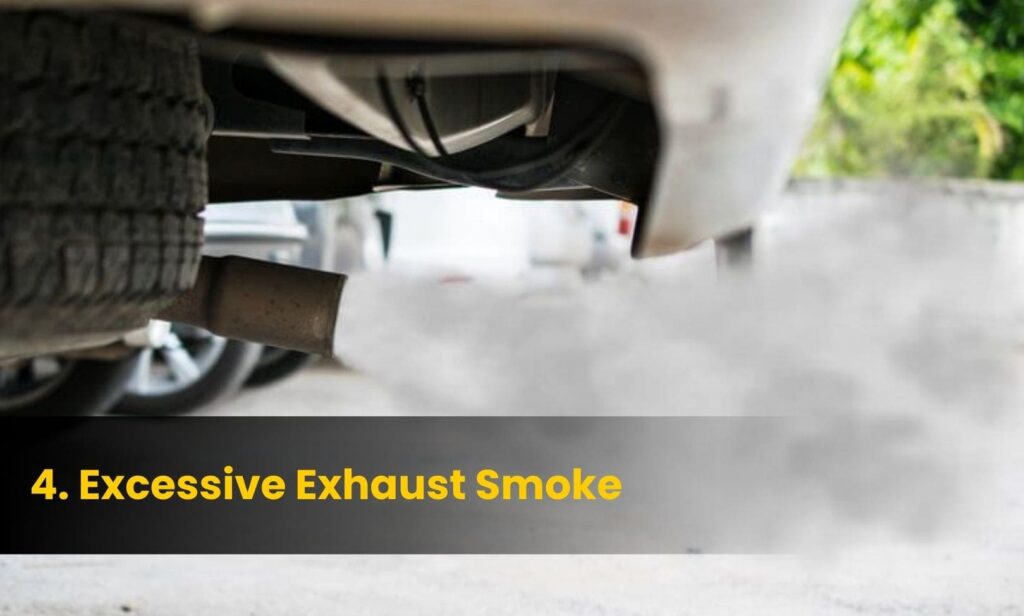
Smoke Colors
Exhaust smoke color can indicate various engine issues. Blue smoke suggests oil burning, often due to worn piston rings or valve seals. Black smoke points to incomplete fuel combustion, possibly from air filter or fuel injection problems. White smoke typically signals coolant leakage into combustion chambers, often from a damaged head gasket.
Smoke Causes
Blue smoke results from oil entering combustion chambers through worn components. Black smoke stems from an improper fuel-air mixture. White smoke indicates coolant burning, usually due to head gasket failure. In some cases, excessive oil in the engine can cause white smoke. Condensation can also create temporary white “smoke” on cold starts.
Smoke Solutions
Address smoke issues promptly to prevent further damage. For blue smoke, inspect and replace worn seals or rings. Black smoke may require air filter replacement or fuel system checks. White smoke often necessitates head gasket replacement. Regular maintenance, including proper oil levels and timely repairs, can prevent many smoke-related problems. Consult a mechanic for accurate diagnosis and repair.
5. Engine Overheating
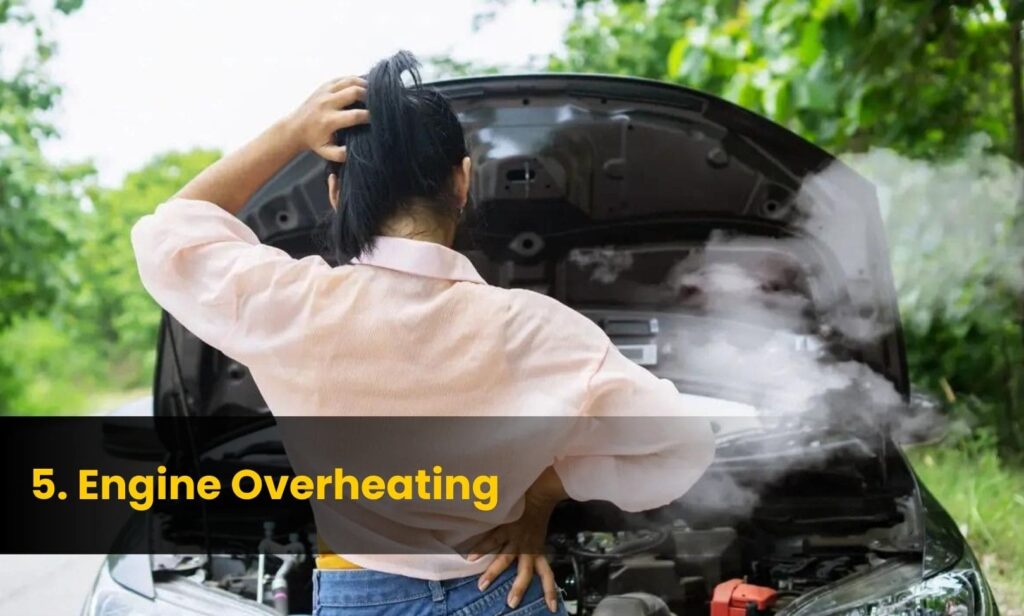
Overheating Signs
Engine overheating manifests through several indicators. Drivers may notice the temperature gage needle spiking to “H” or moving into the red zone. A strange, sweet smell from the engine area could indicate leaking coolant. Steam or smoke rising from under the hood is another clear sign. The “Check Engine” or “Temperature” light on the instrument cluster may illuminate. Additionally, drivers might experience reduced engine power or hear thumping sounds.
Overheating Causes
Low coolant levels are a common cause of engine overheating. This can result from leaks in the cooling system or improper maintenance. A malfunctioning thermostat can disrupt coolant flow, leading to overheating. Water pump failure can also impede coolant circulation. Other potential causes include a clogged radiator, damaged belts and hoses, or low engine oil levels. In some cases, mechanical issues within the engine itself may be responsible.
Overheating Solutions
To address an overheating engine, drivers should immediately turn off the air conditioning and turn on the heater to divert heat. Safely pull over, shut off the engine, and allow it to cool for at least 15 minutes. Check coolant levels and add if necessary. If the problem persists, seek professional assistance. Regular maintenance, including coolant checks and replacements, can prevent overheating. Inspecting belts, hoses, and the radiator for signs of wear or damage is also crucial for maintaining proper engine temperature.
Contact Our Expert Team Today!
6. Fluid Leaks Under the Car
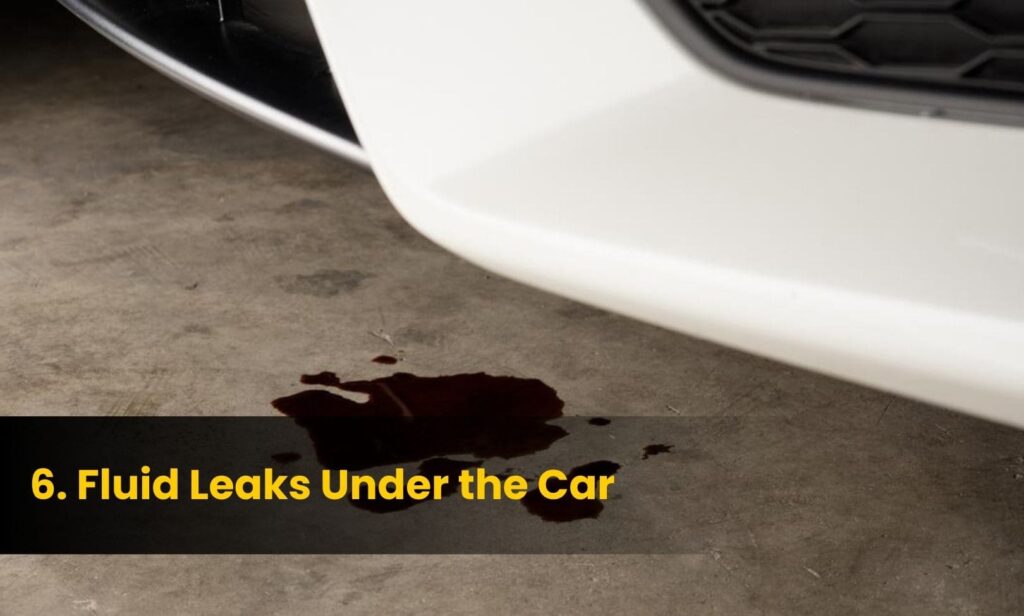
Common Fluid Leaks
Fluid leaks under a car can be concerning, but not all are catastrophic. Common leaks include engine oil, coolant, transmission fluid, brake fluid, and power steering fluid. Even water from air conditioning condensation can form puddles. The severity depends on factors like the car’s age and the type of fluid leaking.
Leak Identification
Identifying the fluid is crucial. Colors provide clues: brown or black often indicates oil, while bright colors like green, pink, or orange suggest coolant. Red fluid might be transmission or power steering fluid. Clear liquid is usually water. Smell and texture can also help identify leaks. For instance, coolant has a sweet odor, while fuel has a strong, distinctive scent.
Leak Solutions
For minor leaks, monitor fluid levels and top up as needed. However, significant leaks require immediate attention. Oil leaks may need gasket replacements, while coolant leaks could indicate radiator issues. Brake fluid leaks are particularly serious and require immediate professional attention. Regular maintenance can prevent many leaks. Always consult a mechanic for accurate diagnosis and repair of persistent or severe leaks.
7. Difficulty Starting the Engine
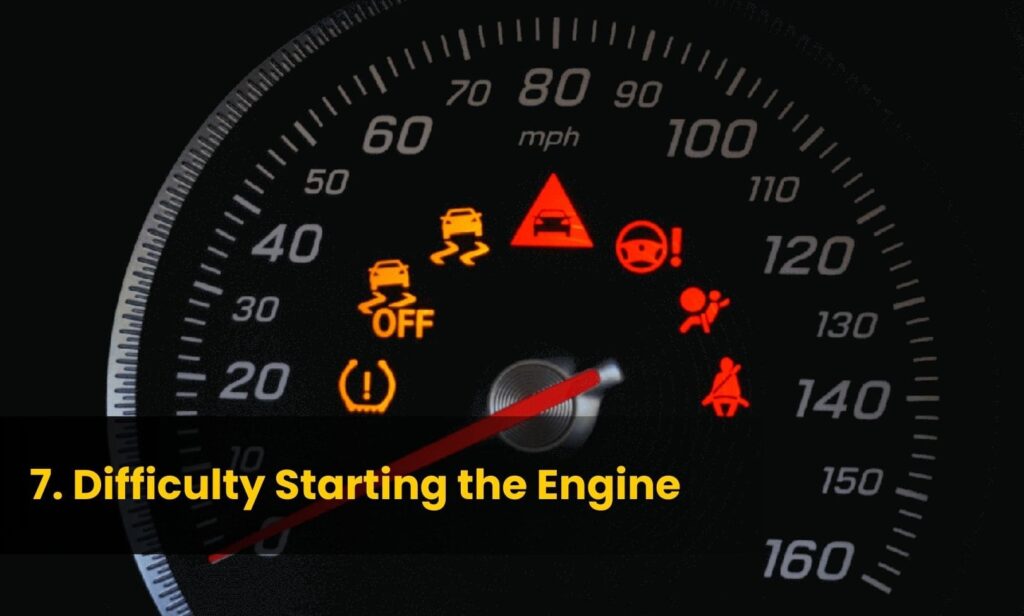
Starting Problem Types
When a car has difficulty starting, it may manifest in various ways. Some common signs include:
- No sound when turning the key
- Rapid clicking noise
- Single click
- Engine cranks but won’t start
- Engine starts but cuts out immediately
Starting Problem Causes
Several factors can lead to starting issues:
- Dead or weak battery
- Faulty starter motor
- Fuel system problems
- Electrical or wiring issues
- Ignition switch failure
- Alternator problems
- Spark plug issues
- Low engine oil
Starting Problem Solutions
To address starting difficulties:
- Check battery connections and charge
- Inspect fuel levels and system
- Listen for unusual sounds to identify specific issues
- Try jump-starting the vehicle
- Examine spark plugs and replace if necessary
- Consider professional diagnosis for complex problems
Regular maintenance and prompt attention to warning signs can help prevent many starting issues.
Contact Our Expert Team Today!
8. Strange Smells from the Engine

Common Engine Smells
Unusual odors from a car engine can indicate various issues. These include burning rubber, rotten eggs, gasoline, burning plastic, and sweet syrupy smells. Each scent often points to a specific problem, such as overheating brakes, catalytic converter issues, fuel system leaks, electrical shorts, or coolant leaks respectively.
Smell Causes
Engine smells can stem from multiple sources. Burning odors might indicate overheating components or fluid leaks onto hot surfaces. Rotten egg smells often suggest catalytic converter problems. Sweet smells typically point to coolant leaks. Gasoline odors could mean fuel system issues or clogged filters. Electrical burning smells might indicate wiring problems.
Smell Solutions
Addressing engine smells promptly is crucial. For burning smells, check brake pads, belts, and hoses. Rotten egg odors require catalytic converter inspection. Sweet smells necessitate coolant system checks. Gasoline odors warrant fuel system examination. Electrical burning smells need immediate professional attention. Regular maintenance can prevent many odor-causing issues. Always consult a mechanic for persistent or strong smells.
9. Knocking or Ticking Sounds
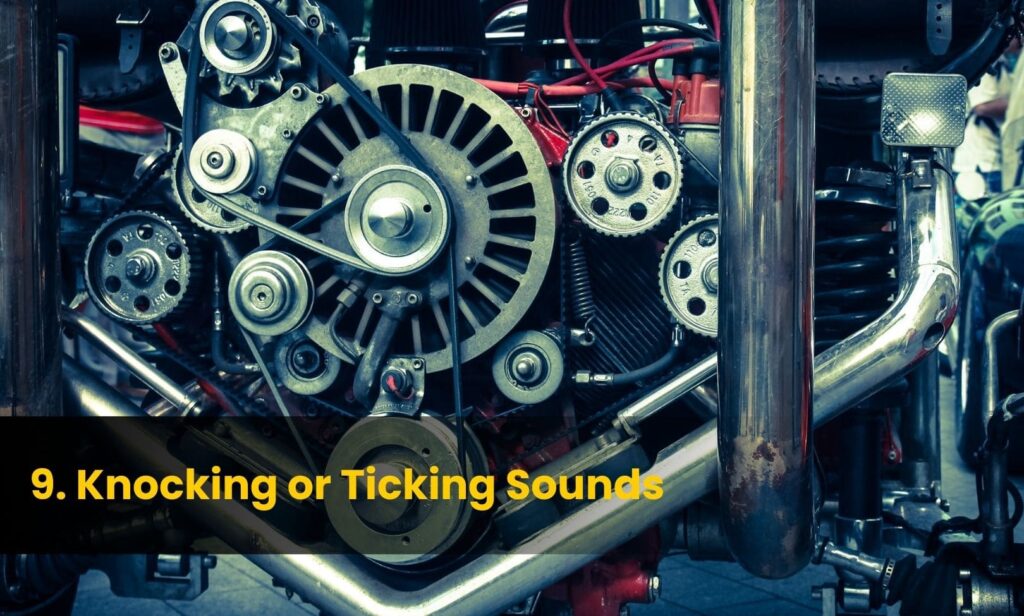
Engine knocking or ticking sounds can indicate serious issues. These noises often result from multiple detonations in each cylinder or metal components hitting together. Drivers may hear metallic pinging, repetitive tapping, or plinking against metal. These sounds can vary in intensity and may become more noticeable during acceleration or when the engine is under stress.
Knocking Sound Types
- Loud thunking or knocking
- Subtle metallic pinging
- Repetitive tapping noise
- Metal plinking against metal
Knocking Sound Causes
- Incorrect or low-octane fuel
- Bad spark plugs
- Excessive carbon deposits
- Incorrect air-fuel mixture
- Overly advanced ignition timing
- Low oil level or poor oil quality
- Worn piston rings or cylinder walls
- Damaged timing belt or chain
Knocking Sound Solutions
- Use correct octane fuel
- Replace spark plugs regularly
- Perform routine maintenance
- Adjust air-fuel mixture
- Check and change oil as needed
- Inspect and replace worn components
- Have a professional diagnose complex issues
Addressing knocking sounds promptly is crucial to prevent severe engine damage. Regular maintenance and using the correct fuel can help prevent many of these issues.
10. Loss of Engine Power
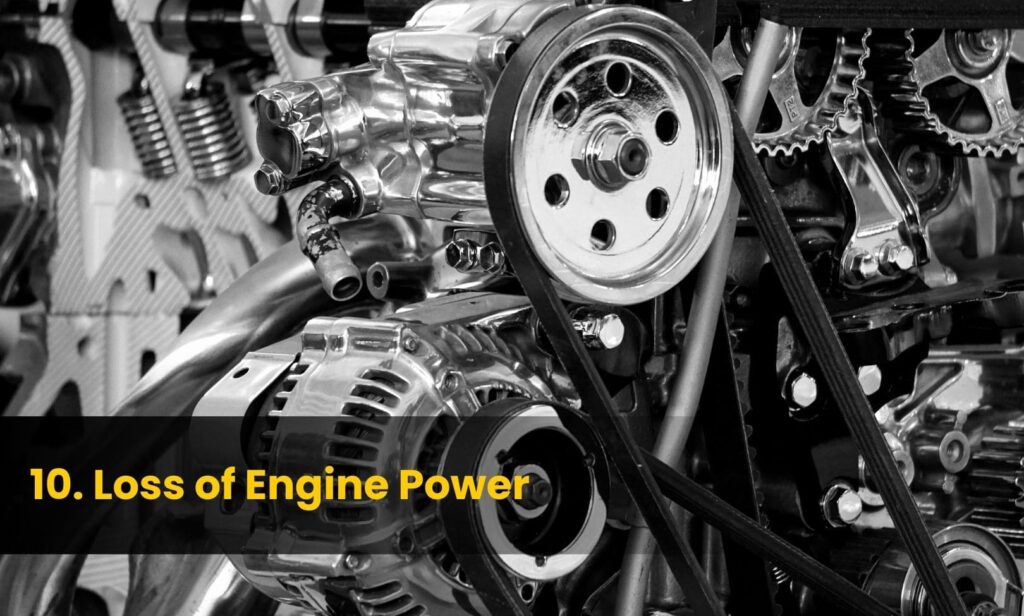
Power Loss Signs
Drivers may notice pressing harder on the accelerator for the same speed, strange smoke from the tailpipe, or rough idling. The car might slow down unexpectedly or fail to accelerate smoothly. In some cases, the engine may stall or quit unexpectedly.
Power Loss Causes
Common causes include clogged fuel filters, dirty air filters, faulty fuel pumps, and malfunctioning sensors like the Mass Airflow Sensor (MAF) or oxygen sensor. Carbon buildup on fuel injectors, exhaust system restrictions, and ignition system issues can also lead to power loss. In older engines, wear and tear on internal components can contribute to decreased performance.
Power Loss Solutions
To address power loss, start by checking and replacing filters (fuel, air) as needed. Clean the throttle body and MAF sensor. Test fuel pressure and consider replacing the fuel pump if necessary. Inspect and clean fuel injectors. Check for exhaust restrictions, particularly in the catalytic converter. Regular maintenance, including timely part replacements and using quality fuel, can prevent many power loss issues.
Contact Our Expert Team Today!
11. Excessive Oil Consumption
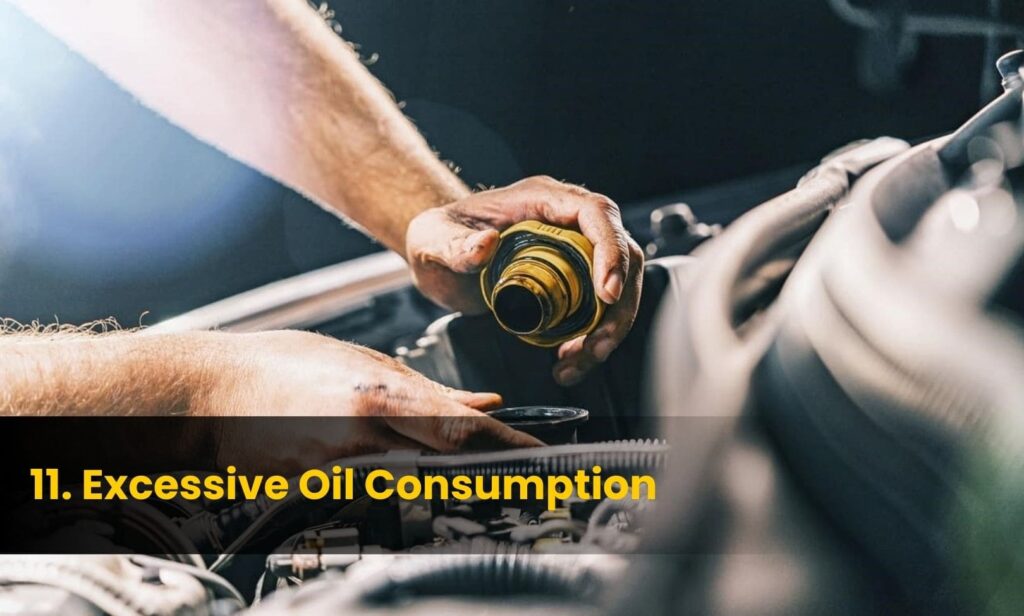
Oil Consumption Signs
Drivers may notice blue or gray smoke from the exhaust, especially when starting the engine. Frequent need to top up oil between changes is another indicator. Modern vehicles typically consume 0.05 to 3 dl of oil per 1,000 km, with 0.05% to 1% considered normal for passenger cars.
Oil Consumption Causes
Worn piston rings, valve seals, or gaskets often lead to excessive oil consumption. Aging engines naturally consume more oil due to component deterioration. Using incorrect oil viscosity or poor-quality oil can also increase consumption. Mechanical issues like improperly honed cylinders or incorrectly installed parts contribute to the problem.
Oil Consumption Solutions
Regular oil changes with the manufacturer-recommended viscosity can help prevent excessive consumption. Addressing mechanical issues promptly, such as replacing worn seals or gaskets, is crucial. For older engines, using high-mileage oil formulations may help reduce consumption. In severe cases, an engine rebuild might be necessary to resolve persistent oil consumption problems.
12. Engine Misfires
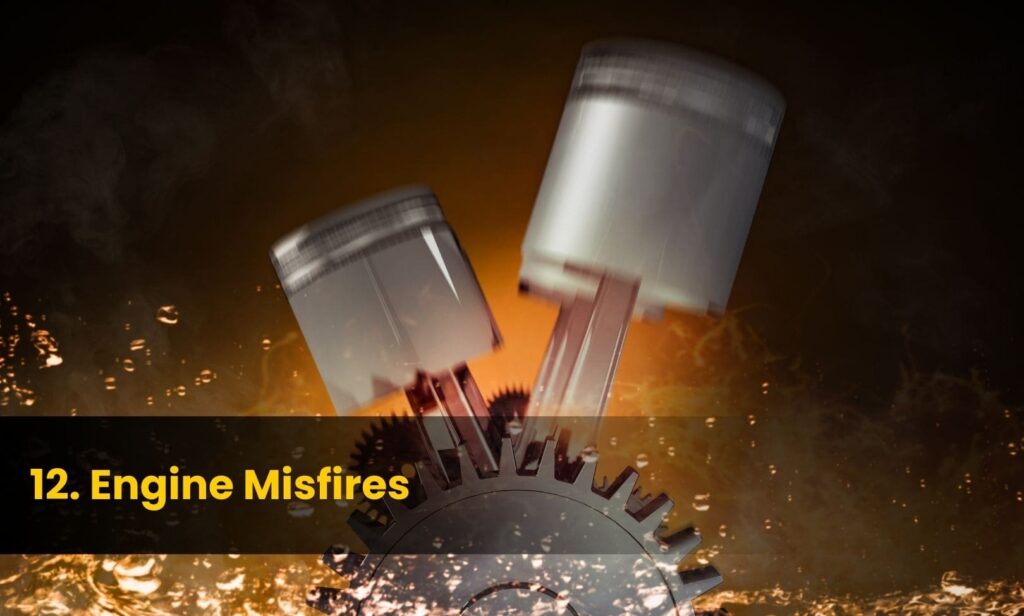
Misfire Symptoms
Engine misfires can manifest as slower acceleration, shaking, or hesitation during acceleration. At idle, the engine may vibrate more than usual and run unevenly. Drivers might notice a rough idle, poor fuel economy, or difficulty starting the engine. In some cases, the check engine light may illuminate.
Misfire Causes
Common causes include worn spark plugs, faulty ignition coils, clogged fuel injectors, and vacuum leaks. Problems with the fuel system, such as a malfunctioning fuel pump or contaminated fuel, can also lead to misfires. Additionally, issues with the engine’s mechanical components, like worn piston rings or valve seals, may contribute to the problem.
Misfire Solutions
To address misfires, start by checking and replacing spark plugs if necessary. Inspect ignition coils and fuel injectors, replacing them if faulty. Use a diagnostic tool to read trouble codes for specific cylinder issues. Check for vacuum leaks and repair as needed. Regular maintenance, including timely part replacements and using quality fuel, can prevent many misfire problems.
13. Engine Stalling
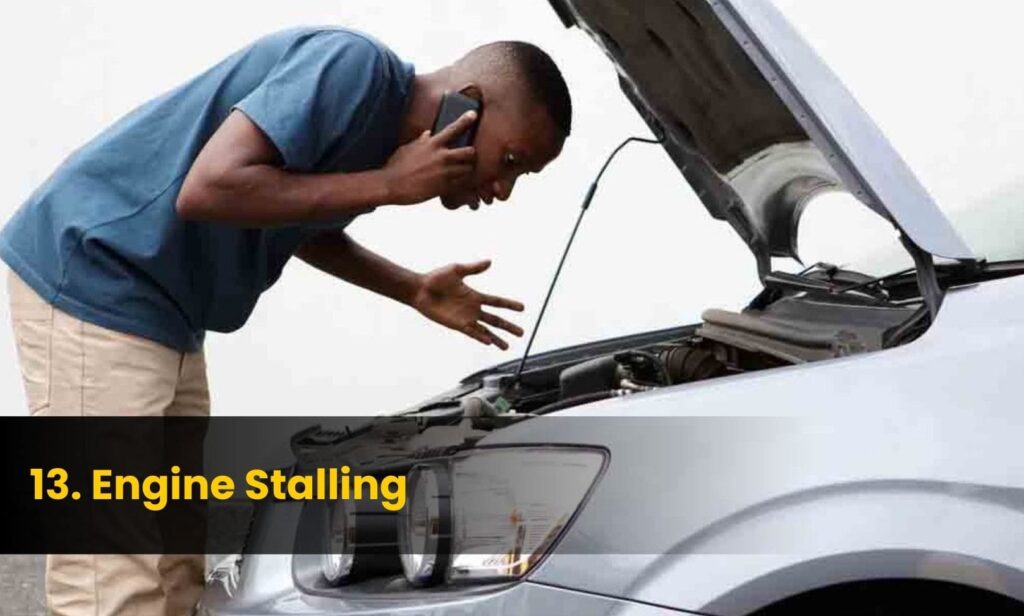
Stalling Scenarios
Engine stalling can occur in various situations, causing frustration and concern for drivers. It may happen while driving, at idle, or when attempting to start the vehicle. Stalling can be particularly alarming when it occurs unexpectedly during operation, potentially leading to loss of power steering and brakes.
Stalling Causes
Several factors can contribute to engine stalling:
- Fuel system issues: Empty tank, faulty fuel pump, or clogged injectors
- Ignition problems: Worn spark plugs or faulty ignition coils
- Sensor malfunctions: Oxygen or crankshaft position sensor failures
- Electrical issues: Alternator or battery problems
- Air intake restrictions: Clogged air filters or throttle body issues
- Transmission problems: Clutch wear in manual vehicles or torque converter failures in automatics
Stalling Solutions
To address engine stalling:
- Check fuel levels and system components
- Inspect and replace faulty ignition parts
- Diagnose and repair sensor issues
- Examine electrical system, including battery and alternator
- Clean or replace air filters and throttle body
- Address transmission problems, such as clutch replacement or torque converter repair
Contact Our Expert Team Today!
14. Blue Exhaust Smoke
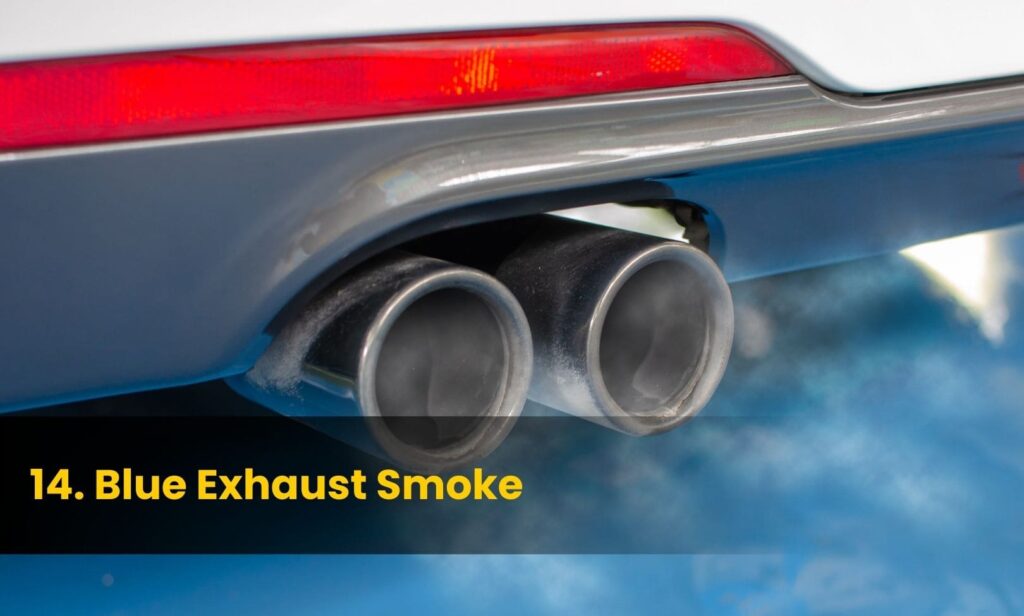
Blue Smoke Meaning
Blue or gray exhaust smoke indicates that the engine is burning oil. This occurs when oil enters the combustion chamber and burns along with the fuel and air mixture. It’s a clear sign of an engine issue that requires immediate attention.
Blue Smoke Causes
Several factors can lead to blue exhaust smoke:
- Worn piston rings or cylinder walls
- Damaged valve seals
- Faulty PCV valve
- Blown turbocharger
- Leaking head gasket
- Worn engine oil seals
- Damaged glow plug (in diesel engines)
Blue Smoke Solutions
To address blue exhaust smoke:
- Clean the engine to remove sludge buildup
- Replace faulty valve seals
- Fix or replace the PCV valve
- Repair or replace a blown turbocharger
- Consult a mechanic for complex issues like worn piston rings or head gasket replacement
Regular maintenance and prompt attention to warning signs can prevent many blue smoke issues.
15. Squealing or Grinding Belts
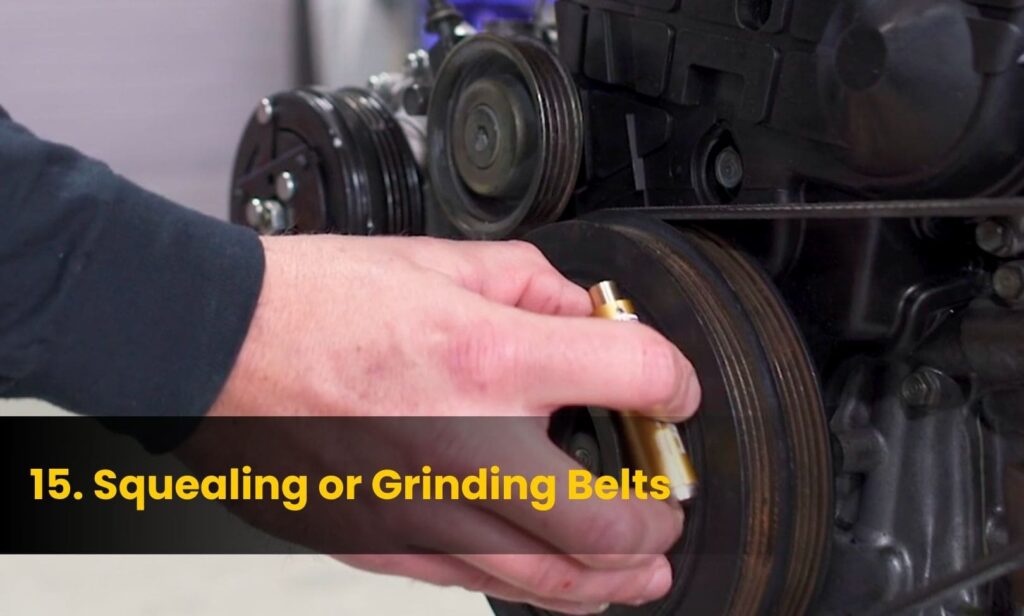
Belt Noise Types
Squealing and chirping are the most common serpentine belt noises. Squealing is a high-pitched shriek that increases in volume with engine speed. Chirping produces sharp, pulsing sounds at a constant pitch and volume as engine speed increases.
Belt Problem Causes
Misaligned engine pulleys are the primary cause of chirping. Squealing often results from low belt tension due to a stretched or worn belt, faulty tensioner, or improper installation. Other causes include worn pulleys, contamination from fluids, or a poor-quality belt.
Belt Maintenance Solutions
Regularly inspect belts for signs of wear, such as cracks, fraying, or missing pieces. Check tensioners for proper function and ensure pulleys are clean and aligned. Replace belts when wear is evident or at recommended intervals. Address any fluid leaks promptly to prevent contamination.
Contact Our Expert Team Today!
Conclusion
Recognizing the signs of engine trouble is crucial for maintaining your vehicle’s health and ensuring your safety on the road. From unusual noises to warning lights, these indicators serve as early warnings, allowing you to address issues before they escalate into major problems. Regular maintenance and prompt attention to these signs can save you from costly repairs and potential breakdowns in the long run.
By staying alert to these warning signs and taking action when needed, you can extend the life of your car and enjoy smoother, safer drives. Remember, your vehicle is a complex machine, and many issues are interconnected. So, it’s always best to consult with a professional mechanic for accurate diagnosis and repair. Experience engine issues? Let our experts take a look. Book an appointment now!
FAQs
1. What are the indicators that your car engine might fail soon?
To determine if your engine might be failing, look for several warning signs:
- The Check Engine light is a clear indicator.
- Frequent overheating of the engine.
- A decline in fuel efficiency.
- Reduced engine power.
- The engine stalls frequently.
- The engine idles roughly.
- Unusual noises and vibrations from the engine.
2. How can I tell if my engine needs to be replaced?
Your engine might need replacement if you notice any of the following signs:
- The Check Engine light remains illuminated.
- Excessive oil consumption.
- High levels of exhaust emissions.
- Unusual sounds emanating from the engine.
- Low oil pressure.
- The engine frequently overheats.
- A noticeable drop in engine power.
- Oil or other fluids leaking underneath the car.
3. What are the signs that your car might soon break down?
Be alert for various indicators that your car is nearing a breakdown:
- Battery damage or visible corrosion.
- Thick oil clumps on the dipstick.
- Metal flakes present in the oil.
- Green or blue puddles beneath the car.
- Uneven wear on tire treads.
- Warning lights activated on the dashboard.
- Unusual sounds.
- Smoke emission.
4. How do you verify the good condition of a car engine?
To check the health of a car engine, especially when buying a used car, consider these steps:
- Review the car’s service history.
- Look for signs of poor maintenance.
- Perform a cold start.
- Observe the color of the exhaust fumes.
- Listen and feel the car’s idle noise and vibrations.
- If unsure, have the car examined by an expert.
